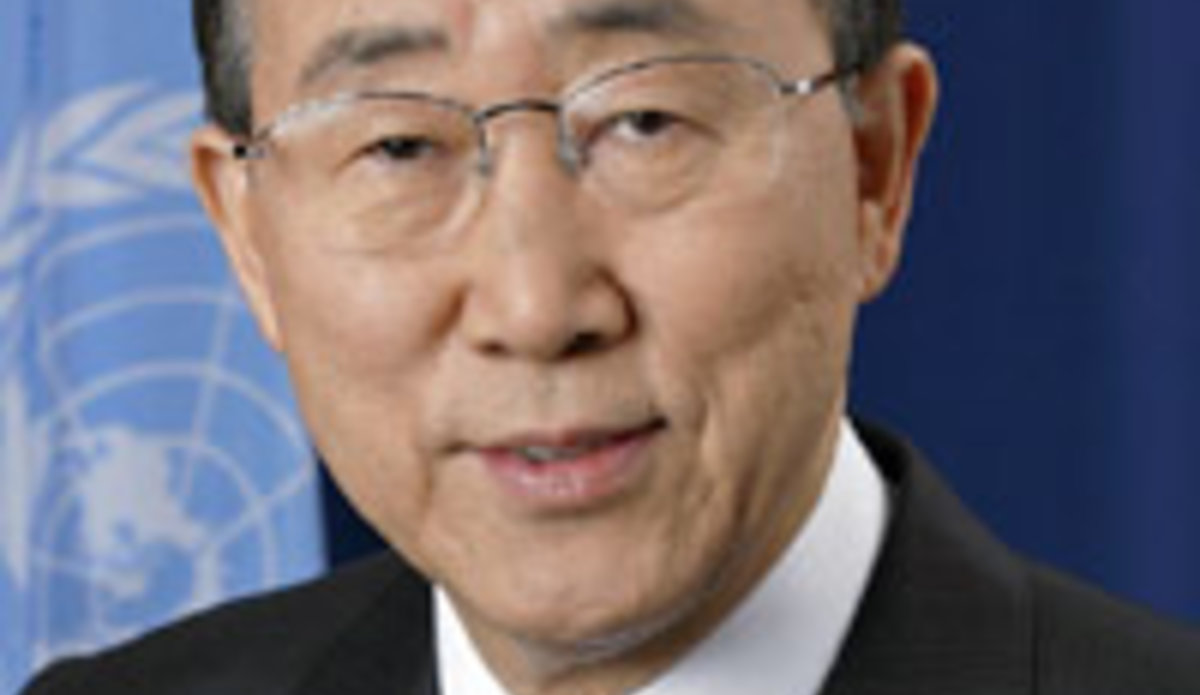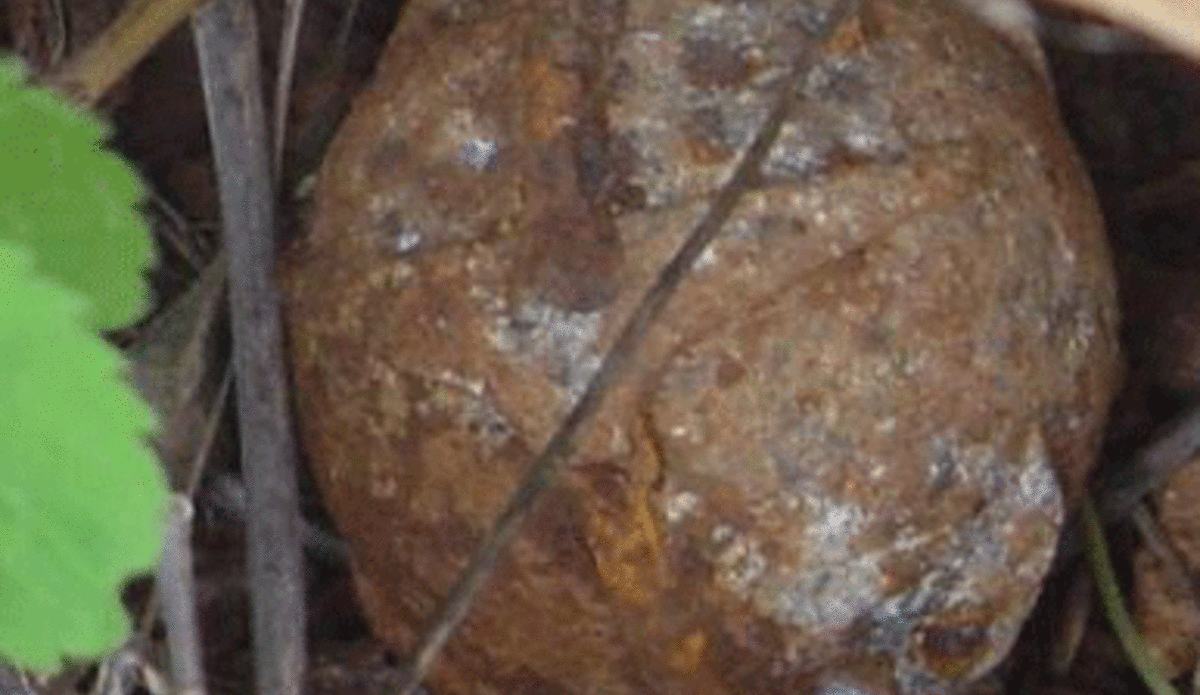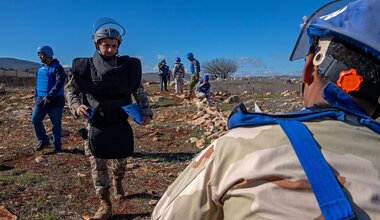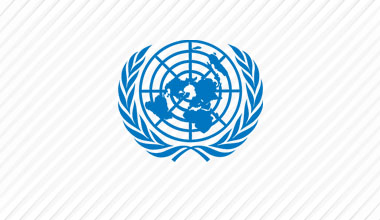United Nations Secretary General’s message on the International Mine Awareness Day, 04 April 2011
"The International Day for Mine Awareness and Assistance in Mine Action is a timely reminder that clearing land of explosive remnants of war saves lives and protects livelihoods.
Mine clearance prevents an indiscriminate weapon from causing harm and havoc long after conflicts have ended, while also creating jobs, transforming danger zones into productive land and setting societies on course for lasting security.
Last year, hundreds of thousands of people received United Nations mine risk education that prevented tragedy for individuals, families and communities. In Afghanistan alone, 14,400 people were employed in the mine action sector, helping to destroy more than 1 million explosive remnants of war.
United Nations development agencies are striving to connect mine action with broader development plans to promote agricultural production, strengthen infrastructure, improve water supply and provide better education and health services. These are all essential to reaching the Millennium Development Goals.
Despite its many well-documented successes, mine action remains underfunded. The 2011 portfolio of projects has secured only about a quarter of the needed resources, leaving a funding gap of $367 million.
While this is a significant sum, the cost is far outweighed by the benefits of removing explosive hazards, creating awareness, providing mine risk education, assisting survivors and helping communities.
I thank all those who have contributed to international mine action. I also applaud the 156 States which are party to the Mine Ban Treaty, the 55 that have ratified the Convention on Cluster Munitions and the 99 that have ratified the Convention on the Rights of Persons with Disabilities.
On this International Day, I call for universal adherence to these important treaties, increased support for mine awareness and mine action, and greater global solidarity in support of this crucial element in our drive to build a safer and more prosperous world for all."
Mine Ban Treaty
The Mine Ban Treaty, formally the Convention on the Prohibition of the Use, Stockpiling, Production and Transfer of Anti-Personnel Mines and on their Destruction and also known as the Ottawa Process, completely bans all Anti-Personnel landmines (AP-mines).

The treaty was signed in 3 December 1997 in Ottawa and became effective as of 1 March 1999. There are currently 156 State Parties to the treaty, while 39 states are not party-states, including two which have signed it but did not ratify it, and 37 non-signatories to the Convention.
The Treaty bans the production, development, the stockpiling and transfer of AP mines within 4 years of the state's ratification. However, the treaty allows for a small number of mines to be maintained for mine clearance and detection purposes as well as the transfer of AP mines for the purpose of their destruction.
The treaty also provides that a signatory country shall clear all of mine areas within 10 years of the Treaty's signature. Furthermore, it calls on States Parties to grant assistance to mine-affected individuals within their respective territories, as well as to support other countries in meeting their treaty obligations.
The Ottawa treaty only covers AP-mines and excludes mixed mines, anti-tank mines, remote controlled claymore mines, anti-handling devices or booby traps, and other static explosive devices against individuals.
While it calls for an increased international cooperation to ensure the enforcement of its provisions, the Treaty emphasizes the role of States in setting the legal and administrative foundations for the proper implementation of the Treaty, as well as setting penalties in cases of violation.
Convention on Cluster Munitions
The Convention on Cluster Munitions is an international treaty banning the use, transfer and stockpile of cluster bombs. Adopted on 30 May 2008, the convention was opened for signature on 3 December 2008 in Oslo and entered into force on 1 August 2010, six months after its ratification by 30 states. As of 14 March 2011, 55 states have ratified it and another 53 have signed but not yet ratified it.
The treaty tolerates certain types of weapons with sub-munitions which do not cause the same hazards than prohibited weapons. A small amount of prohibited weapons and sub-munitions is allowed for the training and development of detection, clearance and destruction methods.

Similarly to the Mine Ban Treaty, the Convention on Cluster Munitions calls for international cooperation and assistance among state parties to ensure the progress towards fulfilling their obligations. It also stresses the role of local authorities in enforcing the provisions of the Convention in a way as to ensure the proper implementation of the ban across the territory and the provision of necessary assistance to victims of Cluster Munitions.
The 1st meeting of the State Parties to the Convention on Cluster Munitions took place in Laos in November where a number of state members and civil society organization participated. The next State parties meeting will take place in September 2011 in Lebanon. Lebanon has signed and ratified the convention and will shortly be a party to the convention.
For more info:
http://www.clusterconvention.org/ , http://www.mineaction.org/ , http://www.icbl.org/
 UN
UN United Nations Peacekeeping
United Nations Peacekeeping








